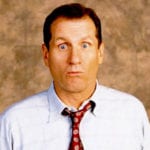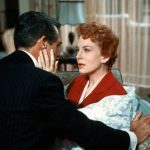 Weird Stuff
Weird Stuff  Weird Stuff
Weird Stuff  Our World
Our World 10 Ways Your Christmas Tree Is More Lit Than You Think
 Movies and TV
Movies and TV The 10 Coolest Stars to Set Sail on The Love Boat
 History
History 10 Things You Didn’t Know About the American National Anthem
 Technology
Technology Top 10 Everyday Tech Buzzwords That Hide a Darker Past
 Humans
Humans 10 Everyday Human Behaviors That Are Actually Survival Instincts
 Animals
Animals 10 Animals That Humiliated and Harmed Historical Leaders
 History
History 10 Most Influential Protests in Modern History
 Creepy
Creepy 10 More Representations of Death from Myth, Legend, and Folktale
 Technology
Technology 10 Scientific Breakthroughs of 2025 That’ll Change Everything
 Weird Stuff
Weird Stuff Ten Bizarre Facts About The Doge Meme
 Our World
Our World 10 Ways Your Christmas Tree Is More Lit Than You Think
 Movies and TV
Movies and TV The 10 Coolest Stars to Set Sail on The Love Boat
Who's Behind Listverse?

Jamie Frater
Head Editor
Jamie founded Listverse due to an insatiable desire to share fascinating, obscure, and bizarre facts. He has been a guest speaker on numerous national radio and television stations and is a five time published author.
More About Us History
History 10 Things You Didn’t Know About the American National Anthem
 Technology
Technology Top 10 Everyday Tech Buzzwords That Hide a Darker Past
 Humans
Humans 10 Everyday Human Behaviors That Are Actually Survival Instincts
 Animals
Animals 10 Animals That Humiliated and Harmed Historical Leaders
 History
History 10 Most Influential Protests in Modern History
 Creepy
Creepy 10 More Representations of Death from Myth, Legend, and Folktale
 Technology
Technology 10 Scientific Breakthroughs of 2025 That’ll Change Everything
10 Sitcoms That Changed So Much They Were Almost Unrecognizable
Some classic TV sitcoms have become so popular viewers didn’t want them to end. It can be a struggle to keep a show fresh and find ways for the characters to continue growing. As a result, a series cast, characters, or premise might be so altered it seems like a different show by the time it ends. While many of these programs improved over time, others have been criticized for compromising the things that made them unique and appealing in the first place. From M*A*S*H to The Big Bang Theory, these are 10 classic sitcoms that changed so much over the years they became almost unrecognizable.
Related: 10 Far-Out Theories About Beloved Sitcoms
10 Happy Days
When the classic sitcom Happy Days premiered in 1974, the show starred Ron Howard as Richie Cunningham, a wholesome, likable, but somewhat awkward teen growing up during the 1950s in an ideal American family. In the first season, an acquaintance of Richie, auto-mechanic and sexy young biker Arthur “Fonzie” Fonzarelli, was just a small recurring character. During what would turn out to be the series’ 11-season run, the popularity of Fonzie, played by Henry Winkler, skyrocketed, and it didn’t take long before he moved into an apartment above the Cunningham’s garage and became part of the family.
For a while, it was unclear exactly who was the lead: the clean-cut former child actor Ron Howard or iconic heartthrob Henry Winkler. As his feature film-directing career took off in the early 1980s, Howard was absent from the show for a couple of years, making Winkler the undisputed star. Other major changes included the addition of new characters like Fonzie’s cousin Chachi (Scott Baio), who later married Richie’s sister Joanie. Viewers also saw the womanizing Fonzie involved in serious relationships and adopting a child. [1]
9 Family Matters
Another example of a minor character developing a huge following and subsequently dominating a show is the rise of nerdy genius Steve Urkel on Family Matters. A spin-off of Perfect Strangers, the upbeat sitcom Family Matters, set in Chicago, premiered in 1989 and revolved around the Winslows, a middle-class African-American family headed by dad, Carl (Reginald VelJohnson), and quick-witted mom, Harriet (Jo Marie Payton). The couple and their three children—Eddie, Laura, and Judy—shared their home with Carl’s mother, Estelle, along with Harriet’s widowed sister, Rachel, and her son.
The Winslow’s hilariously bumbling teenage neighbor, Steve Urkel, played by Jaleel White, was so popular he became the star of the show. His wild scientific experiments added a fantasy element to the storylines, especially when he created an alter ego, the cool and suave Stefan, and later cloned himself. By the end of the series in 1998, Urkel had finally won the heart of Laura Winslow (Kellie Shanygne Williams).[2]
8 The Big Bang Theory
When The Big Bang Theory premiered in 2007, it revolved around four brilliant but nerdy guys who were hopelessly awkward with women. But the characters made enormous progress during the show’s 12 seasons. Penny (Kaley Cuoco), the beautiful waitress and aspiring actress, shook things up for two physicists sharing an apartment, Leonard (Johnny Galecki) and Sheldon (Jim Parsons), when she moved in across the hall. Penny and Leonard’s off-and-on romance eventually led to marriage in season nine. While this outcome was fairly predictable, it was not nearly as obvious that the other guys would find their soul mates.
The brilliant but socially inept Sheldon, who seemed completely uninterested in love, reluctantly began a relationship with neurobiologist Amy, played by Mayim Bialik, whom he married in the eleventh season finale. While aerospace engineer Howard (Simon Helberg) was the most outgoing, his sleazy pickup lines and abrasive personality didn’t help his chances with women. Still, he did manage to marry Penny’s co-worker Bernadette (Melissa Rauch) in the middle of the series, and the couple later had children. Even Raj (Kunal Nayyar), who couldn’t so much as talk to a woman without the crutch of alcohol, found himself in an exclusive relationship by the end of the sitcom in 2019.[3]
7 The Facts of Life
A spin-off of Different Stokes, the 1979 sitcom The Facts of Life went through some real transformations during its nine-season run. This series centered on the students of Eastland Academy, a girls’ boarding school, and the school dietician/housemother Edna Garrett (Charlotte Rae). The first big change took place in the second season when Nancy McKeon, who played Jo Polniaczek, joined the cast, becoming one of the core group of students—Blair, Natalie, and Dorothy “Tootie”—who would remain the focus of the show.
Since the series went on much longer than it would have taken for the main characters to graduate and the girls were clearly grown up by the middle of the series, a change in venue seemed necessary. This happened in the fifth season when Mrs. Garrett started her own gourmet delicatessen, and the young women went to work for her.
By the last few seasons, The Facts of Life had outlived its coming-of-age premise as the characters faced more adult challenges and embarked on new careers. Toward the end, the show really was virtually unrecognizable. Several new characters were also added, like their friend Andy (Mackenzie Astin) and Mrs. Garrett’s sister Beverly Ann (Cloris Leachman), who replaced her as manager of the business, which was now a novelty store.[4]
6 My Three Sons
The family sitcom My Three Sons, which premiered in 1960, was set in the bustling but loving home of widower Stephen Douglas (Fred MacMurray), his three young sons, Mike (Tim Considine) Robbie (Don Grady) and Chip (Stanley Livingston), and his father-in-law Michael “Bud” O’Casey played by William Frawley. The all-male household changed over the years as numerous marriages brought wives and a stepdaughter into the mix.
Stephen married Barbara (Beverly Garland), Robbie married Katie (Tina Cole), and Chip married Polly (Ronne Troupe). Mike had married and moved away in 1965. Besides the addition of the female characters, actor William Demarest (Uncle Charley) joined the cast midway to take over housekeeping duties when Frawley left the show. Stephen adopted Ernie, played by Barry Livingston, who was the real-life brother of Stanley Livingston. The family relocated to California, and in 1970 a whole new generation began when Katie gave birth to triplet boys.[5]
5 Benson
Benson, starring Robert Guillaume as the title character, debuted in 1979 as a spin-off of the farcical comedy series Soap. Benson DuBois, who was a wise-cracking butler for the Tate family on Soap, was hired to run the household of Mrs. Tate’s cousin, newly elected governor Eugene Gatling (James Noble).
Benson proved himself invaluable when it turned out that the well-meaning but simpleminded Gatling needed help with more than managing the governor’s mansion. During the seven seasons of the show, Benson rose to state budget director and then was elected lieutenant governor. He eventually ran against Gatling for governor, with the 1986 series finale ending just before the election results were announced, so the audience didn’t know who won.
Besides the transformations in Benson’s career, there were key changes in the cast. Caroline McWilliams, who played executive secretary Marcy, left the sitcom in 1981 to be replaced by Didi Conn, playing Benson’s new assistant, Denise, who later marries press secretary, Pete (Ethan Phillips). Rene Auberjonois joined the show in the second season as the governor’s new chief of staff and Benson’s foil, Clayton Endicott III. The stern and often derisive executive housekeeper Gretchen Kraus (Inga Swenson) remained on the show throughout but changed enough to go from being Benson’s arch nemesis to his friend and assistant when he became lieutenant governor.[6]
4 Laverne & Shirley
There was little resemblance between the premise of Laverne & Shirley when it debuted as a Happy Days spin-off in 1976 and when the show ended in 1983. What started out as a buddy sitcom starring Penny Marshall and Cindy Williams about two beer factory workers sharing a basement apartment in 1950s Milwaukee eventually became a show set in Burbank, CA, centering just on Laverne, who was now an aspiring actress.
Even though Williams left in 1982, the show was still called Laverne & Shirley. While wacky neighbors Lenny and Squiggy, as well as Shirley’s boyfriend Carmine, had followed the women to California, there were also several new characters—like model Rhonda and stuntman Sonny—added after they relocated. Laverne’s father and stepmother also remained on the show but switched from running a pizzeria to a restaurant, Cowboy Bill’s.[7]
3 Gimme a Break!
For a show that didn’t have an especially long run, the popular sitcom Gimme a Break! (1981–1987) went through a lot of changes. Actress/singer Nell Carter starred as outspoken African-American housekeeper Nell Harper, working for a heavy-handed white police chief in Glenlawn, California. She was helping to raise his three daughters—Katie, Julie, and Samantha—who had recently lost their mother.
By the time the show ended, the girls were all grown up. Nell was working at a publishing company while sharing an apartment with her best friend Addy (Telma Hopkins) in New York and raising two little boys. A major change in the show came about when Dolph Sweet, who played Chief Carl Kanisky, died in 1985. Not only was the premise of the show altered with Sweet’s passing, but without the verbal sparring between Nell and Chief Kanisky, the comedy suffered as well.
As the girls were transitioning to adulthood, the show’s focus shifted to the antics of Nell and Addy, along with Nell’s experiences raising first one and then two small foster sons played by future teen idol Joey Lawrence and his real-life brother Matthew Lawrence.[8]
2 Roseanne
The blue-collar sitcom Roseanne, which premiered in 1988, went through some major changes during its long run. The show starred irreverent comedienne Roseanne Barr as a factory worker and mother of three. Her construction worker husband, Dan, was played by (John Goodman) and Laurie Metcalf was cast as her flaky sister, Jackie. In 1993 Sarah Chalke took over the role of the Conners’ eldest daughter Becky, replacing Alicia Goranson in the role.
Roseanne opened a restaurant in the sixth season, and the characters went on to experience many other life changes, including marriages and the birth of children. However, the most shocking development during the original series, which ended in 1997, was when the Conners became millionaires after winning the lottery. The working-class aspect had been such a big part of the show until then that becoming extremely wealthy overnight drastically altered Roseanne to the point that it was almost like a different series.
However, in the comedy’s finale, viewers learned that the show was supposed to be Roseanne’s fictionalized version of events and characters for a book she had been writing, and they hadn’t won the lottery after all.
The reboot of Roseanne in 2018 ended on a similarly surprising note. Roseanne’s character died when the star was forced off her own sitcom following controversial tweets. This resulted in brief follow-up series, The Conners.[9]
1 M*A*S*H
One of the best-loved series of all time, comedy-drama M*A*S*H ran from 1972 to 1983. However, this show, about a mobile surgical hospital in the Korean War, was not an instant hit and was nearly canceled early on before gaining a massive following. This TV adaptation of the 1970 film went through so many changes, including the style of the writing and a blending of genres, that it was almost like two or three different series. The tone was much lighter at the beginning, with lots of sight gags and wacky humor. Featuring a strong ensemble cast, M*A*S*Hinitially focused on two irreverent surgeons: captains Benjamin Franklin “Hawkeye” Pierce (Alan Alda) and “Trapper John” McIntyre (Wayne Rogers).
With Alda’s emergence as the star of the series, Rogers left at the beginning of the fourth season to be replaced by Mike Farrell, who played Capt. B.J. Hunnicutt, Other cast changes added more serious characters and, along with the creative influence of Alda, who was writing and directing many episodes of the show, took on a noticeably more grown-up style.
The characters who remained throughout the run of M*A*S*H grew and matured, especially Maj. Margaret “Hot Lips” Houlihan (Loretta Swit), the nemesis of Hawkeye and one-time mistress of buffoonish Maj. Frank Burns. The spiteful, judgmental, hypocritical Houlihan eventually transformed into a nice and much more agreeable person. By the last few years, the previously zany sitcom had mainly become a message-heavy drama with some humorous moments.[10]







